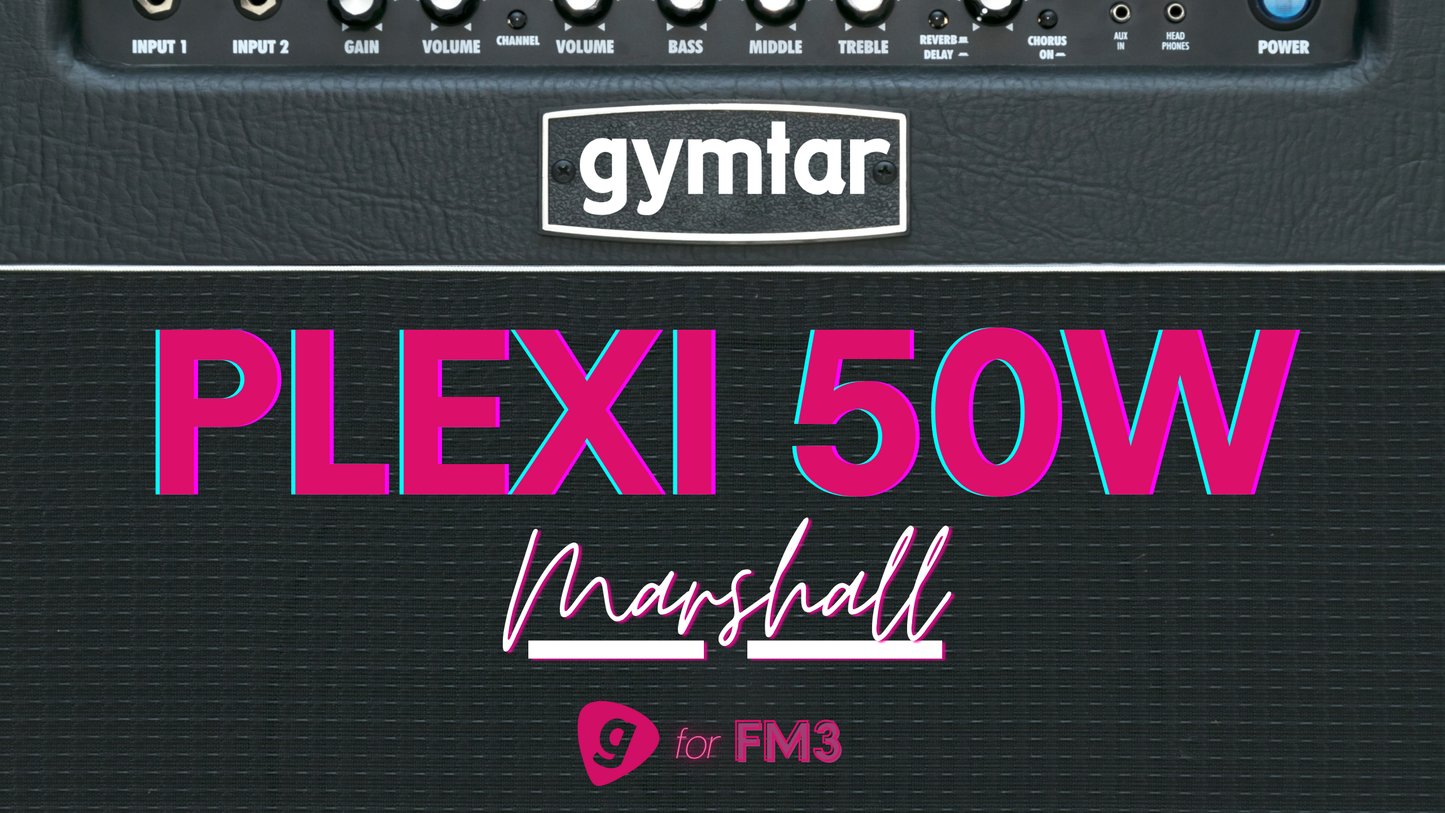Gymtar
FM3/FM9/AXE-FX III Patch based on Marshall Plexi 50W (JMP 1987)
FM3/FM9/AXE-FX III Patch based on Marshall Plexi 50W (JMP 1987)
Couldn't load pickup availability
FM3/FM9/AXE-FX III Patch based on Marshall Plexi 50W (JMP 1987)
The story begins in the mid-1960s, when Jim Marshall, a London drum shop owner turned amplifier designer, sought to give British musicians something they couldn’t quite get from American gear—raw power, aggressive mids, and unfiltered presence. Working with engineers like Ken Bran and Dudley Craven, Marshall created an amp inspired by Fender’s Bassman, but tweaked for British tastes and parts availability.
By the late '60s, the Marshall JMP 1987 model—a 50-watt amp head—was turning heads and melting faces. It was lighter and more manageable than the 100-watt version (the model 1959), but still packed enough punch to fill venues and dominate studio recordings.
The term "Plexi" doesn’t refer to one specific model, but to a range of Marshall amps made roughly between 1965 and 1969, all of which featured plexiglass front panels. After 1969, Marshall switched to aluminum panels, marking the end of the true "Plexi" era in the eyes of many purists.
The 50-watt Plexi, also known by its model number JMP 1987, ran on a pair of EL34 power tubes, which contributed to its warm yet aggressive tone. Earlier models sometimes used KT66s or 6CA7s, depending on availability and market. The preamp section typically used three ECC83/12AX7 tubes, delivering that unmistakable British crunch and clarity.
The Plexi 50’s tone is brilliant, raw, and harmonically rich. Compared to the 100-watt version, it breaks up a little sooner and compresses more easily, which players often describe as feeling more "alive" or "dynamic." With fewer power tubes, the 50-watt variant could be pushed into overdrive at more manageable volume levels—though still thunderously loud by today’s standards.
Its dual channels (often labeled as "Normal" and "Bright") allowed for a variety of tonal flavors. Clever guitarists soon discovered the trick of jumping the channels—linking them with a patch cable—to blend the smoother low-end of the Normal channel with the biting highs of the Bright side. This became a defining part of the Plexi mystique.
Many guitar legends plugged into a 50-watt Plexi—or a variant of it—at some point in their careers. Jimmy Page, Angus Young, and Paul Kossoff are just a few of the iconic names associated with its singing sustain and ripping lead tones. Though the 100-watt model was more visually dominant on stage, the 50-watt version found favor in studios where its subtler nuances could be captured with more control.
Today, the Plexi 50-watt amp is celebrated as a cornerstone of the classic rock and blues sound. Its design has inspired countless other amps, and its voice still echoes in modern recordings through reissues, plugins, and modeling units.
Despite its age, the Plexi 50 isn’t just a relic; it's a living, breathing instrument in its own right. Plug in, crank it up, and you’re not just playing an amp—you’re channeling the very soul of rock history. At Gymtar we did our best to keep this legend alive with 4 models fitting the 4 channels in the amp block. Have a try today!
SCENE 1: 6CA7
SCENE 2: 6550
SCENE 3: High 1
SCENE 4: Jump
Effects : wah, phaser, flanger, delay, reverb
Share



